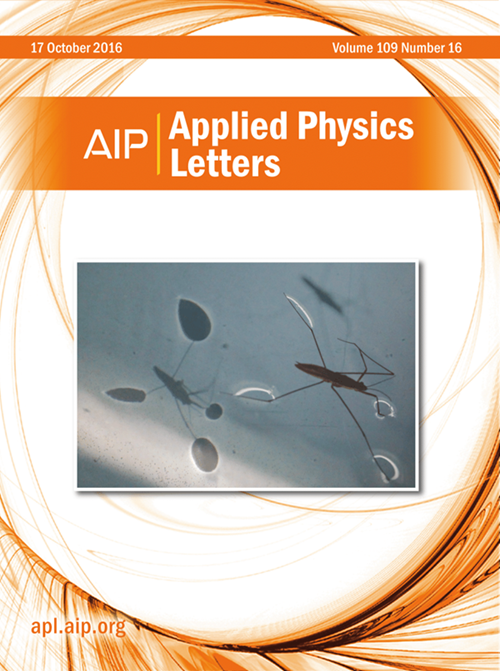Study of electronic band alignment in SiGeSn/GeSn quantum well via internal photoemission effect
IF 3.6
2区 物理与天体物理
Q2 PHYSICS, APPLIED
引用次数: 0
Abstract
SiGeSn-based optoelectronic devices, which operate across a broad infrared wavelength range, have garnered significant attention. Among these, heterostructures incorporating quantum wells are particularly promising due to their enhanced carrier confinement. In such structures, the type of band alignment and the associated barrier heights are critical parameters, directly influencing device performance. In this work, we employ internal photoemission measurements to extract the effective barrier heights in a Si0.024Ge0.892Sn0.084/Ge0.882Sn0.118 single quantum well, which is pseudomorphically grown on a Ge0.9Sn0.1 buffer atop a Ge buffered Si substrate. The extracted effective barrier heights are approximately 22 ± 2 meV for electrons and 50 ± 2 meV for holes. Additionally, based on the IPE threshold energy of 555 ± 1 meV, we have experimentally identified a type-I band alignment between the GeSn well and SiGeSn barrier layers—an important finding for the design of efficient infrared photonic devices.利用内发光效应研究SiGeSn/GeSn量子阱中的电子能带对准
基于sigesn的光电器件,其工作在广泛的红外波长范围内,已经引起了极大的关注。其中,结合量子阱的异质结构由于其增强的载流子约束而特别有希望。在这种结构中,带对准类型和相关势垒高度是直接影响器件性能的关键参数。在这项工作中,我们采用内部光电发射测量来提取Si0.024Ge0.892Sn0.084/Ge0.882Sn0.118单量子阱的有效势垒高度,该量子阱是在Ge缓冲的Si衬底上假晶生长在Ge0.9Sn0.1缓冲层上的。提取的有效势垒高度约为电子的22±2 meV和空穴的50±2 meV。此外,基于IPE阈值能量为555±1 meV,我们通过实验确定了GeSn阱和SiGeSn势垒层之间的i型带对准,这是设计高效红外光子器件的重要发现。
本文章由计算机程序翻译,如有差异,请以英文原文为准。
求助全文
约1分钟内获得全文
求助全文
来源期刊

Applied Physics Letters
物理-物理:应用
CiteScore
6.40
自引率
10.00%
发文量
1821
审稿时长
1.6 months
期刊介绍:
Applied Physics Letters (APL) features concise, up-to-date reports on significant new findings in applied physics. Emphasizing rapid dissemination of key data and new physical insights, APL offers prompt publication of new experimental and theoretical papers reporting applications of physics phenomena to all branches of science, engineering, and modern technology.
In addition to regular articles, the journal also publishes invited Fast Track, Perspectives, and in-depth Editorials which report on cutting-edge areas in applied physics.
APL Perspectives are forward-looking invited letters which highlight recent developments or discoveries. Emphasis is placed on very recent developments, potentially disruptive technologies, open questions and possible solutions. They also include a mini-roadmap detailing where the community should direct efforts in order for the phenomena to be viable for application and the challenges associated with meeting that performance threshold. Perspectives are characterized by personal viewpoints and opinions of recognized experts in the field.
Fast Track articles are invited original research articles that report results that are particularly novel and important or provide a significant advancement in an emerging field. Because of the urgency and scientific importance of the work, the peer review process is accelerated. If, during the review process, it becomes apparent that the paper does not meet the Fast Track criterion, it is returned to a normal track.
 求助内容:
求助内容: 应助结果提醒方式:
应助结果提醒方式:


